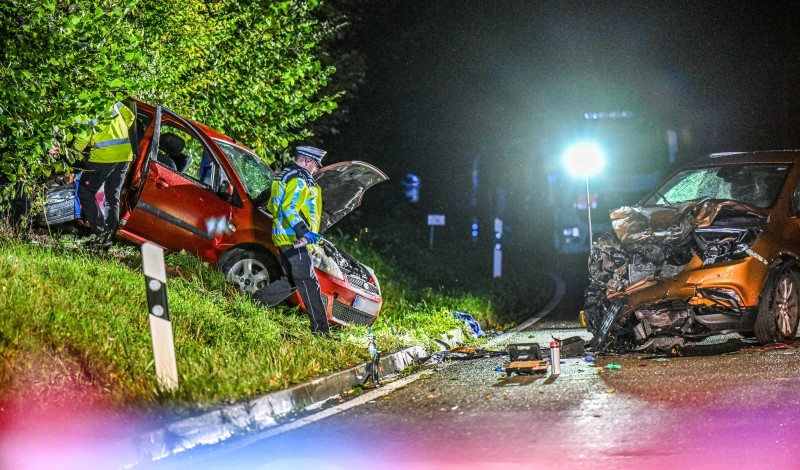
Scholars and practitioners explore solutions to the safety risk of distracted driving.
Drivers across America know the phrase “Stay alive, don’t text and drive.” Yet crashes caused by distracted drivers kill nine people every day in the United States.
Distracted driving broadly includes visual, manual, and cognitive distractions—and texting while driving creates all three of these distraction types. Over 12 percent of fatal crashes involving distracted driving in 2022 included phone use while driving. State highway safety authorities suspect that the real number may be even higher because drivers typically do not report honestly whether they were using a phone when the crash occurred.
Texting while driving began to receive greater attention in the 2000s with the rise of text messaging. To address this problem, stakeholders adopted several approaches, including public and private awareness campaigns. For example, families across the United States watched tragic stories about fatalities caused by texting while driving. For example, both an Extreme Makeover: Home Edition episode and a U.S. Department of Transportation video featured the family of 17-year-old Alex Brown, who died in 2009 after losing control of her vehicle as she was texting while driving to school.
Since then, data have not shown efficacy or a decline in texting-related traffic fatalities. The Transportation Department’s National Highway Traffic Safety Administration (NHTSA) reported that 3,092 people died in crashes involving distracted drivers in 2010. Over a decade later, in 2022, NHTSA reported that 3,308 individuals were killed in crashes involving distracted drivers.
NHTSA found drivers between the ages of 25 and 34 to be responsible for the highest percentage of fatal car crashes related to distracted driving in 2022. At an April 2023 press conference, however, the Ohio state government emphasized that “people of all ages, races, and backgrounds” drive while using a phone, increasing the risk of fatal crashes.
To mitigate this problem, the Transportation Department released a multi-faceted Safe System Approach in 2022, and NHTSA launched the Put the Phone Away or Pay campaign to raise awareness in 2024. The Safe System Approach identifies principles to address roadway safety—including shared responsibility among all stakeholders. The approach recognizes that the government, the private sector, and the general public all share responsibility to prevent deadly crashes. Likewise, the “Put the Phone Away or Pay” campaign urges drivers to stop phone usage while driving by taking steps such as placing one’s phone in the glove box.
In addition to increasing public awareness of the dangers of texting while driving, policymakers continue to enact and revise laws to reduce its occurrence. In 2023, for example, Ohio broadened its prohibition on cell phone usage while driving to ban, in most cases, anything more than one swipe or touch on a phone. The amended law also increased penalties for drivers caught doing so.
Given the pervasiveness of texting while driving despite federal and state efforts, some safety advocates propose that the federal government should urge technology companies, including Apple, to implement software that would disable a driver’s cell phone until they reach their destination. Practitioner Summer Galitz, for example, describes continued cell phone use while driving as an epidemic in the United States. She argues that further efforts, in addition to legislation, enforcement, and awareness, are necessary to decrease fatalities associated with distracted driving.
In this week’s Saturday Seminar, scholars discuss challenges in distracted driving laws’ enforcement and propose regulatory solutions to increase their efficacy.
- Studies reveal mixed results regarding whether current legislation reduces dangers associated with distracted driving, practitioner Samantha Bloch explains in a National Conference of State Legislatures report. In 2018, about 2,841 people died in distracted-driving-related accidents, Bloch reports. Bloch found that states most commonly implement bans on handheld device usage to reduce distracted driving rates. Currently, 48 states ban drivers from texting while driving, and 24 states ban all usage of handheld devices. Despite this state action, Bloch warns that experts have yet to reach a consensus on whether bans effectively reduce distracted driving. Bloch proposes additional methods to complement bans, such as installing rumble strips on roadways and requiring cell phone manufacturers to implement anti-distraction features on their devices.
- Employers should take a more active role in reducing distracted driving car crashes, Nanci K. Carr of California State University Northridge argues in an article in the Rutgers Law Record. Carr explains that numerous courts have held that employers can be found liable for car crashes caused by their employees who were distracted due to work-related calls. To reduce the number of accidents caused by distracted drivers and the employer’s share of the liability, Carr recommends that employers explicitly forbid taking work calls while driving in their company policies. Carr concludes that this is the only way to guarantee that employers will not be held liable for their employees’ actions.
- Usage-based insurance (UBI) for driving is a life-saving technique that many individuals are overlooking, Omri Ben-Shahar of University of Chicago Law School argues in an article in the Journal of Legal Analysis. Ben-Shahar explains that UBI uses technology to track driving patterns and base premiums on an individual’s driving behavior. Studies demonstrate that policyholders with UBI technology drive more safely and experience fewer accidents. Despite the increases in safety, however, Ben-Shahar explains that many states restrict the use of UBI due to privacy concerns—and some, such as California outright ban it. Ben-Shahar recognizes the gravity of the privacy concerns, but he argues that policy discussions currently fail to consider the full benefits of the technology.
- Comprehensive bans on using cell phones while driving may reduce rear-end crash rates, Ian J. Reagan of the Insurance Institute for Highway Safety and several coauthors find in a study in the Journal of Safety Research. In examining such bans in three states that strengthened their prohibitions in 2017—Washington, California, and Oregon—the Reagan team found that rear-end rates decreased about 11 percent in Washington, about 9 percent in Oregon, and remained consistent in California. Differences in the laws themselves may explain these results, the Reagan team suggests. Washington and Oregon’s laws use plain language and allow fewer loopholes as compared to California, which may improve law enforcement’s ability to issue proper citations for violations, the Reagan team explains.
- Cell phone use while driving remains a pervasive issue despite widespread knowledge of the dangers of distracted driving, Judge Herbert B. Dixon, Jr. contends in an article in The Judges’ Journal. Although nearly 95 percent of respondents in a nationwide survey believed that reading from a phone while driving was extremely or very dangerous, over 30 percent of those same respondents reported that they read from their phones while driving within the past 30 days, Judge Dixon reports. Because he recognizes that concealed phone use by drivers poses a challenge to the enforcement of distracted driving laws, Judge Dixon advocates a ban on all handheld cell phone use.
- In a study published by The Ohio State University’s Drug Enforcement and Policy Center, Peter Leasure of Moritz College of Law analyzes the unclear impact of Ohio’s recent distracted driving laws. Leasure studied vehicular crashes from 2021 to 2024 in Columbus, Ohio. He argues that exceptions to the law, including the legality of holding a phone to a driver’s ear, may have caused the lack of a strong conclusion on distracted driving laws’ efficacy. In the future, researchers should address control variables—such as weather, traffic volume, and population—and not generalize Columbus’s data to other Ohio cities, Leasure advises. Despite inconsistency in his study, some studies demonstrate that stricter laws, including complete bans on handheld devices while driving, correlate with less risk of fatal vehicle crashes.
The Saturday Seminar is a weekly feature that aims to put into written form the kind of content that would be conveyed in a live seminar involving regulatory experts. Each week, The Regulatory Review publishes a brief overview of a selected regulatory topic and then distills recent research and scholarly writing on that topic.



